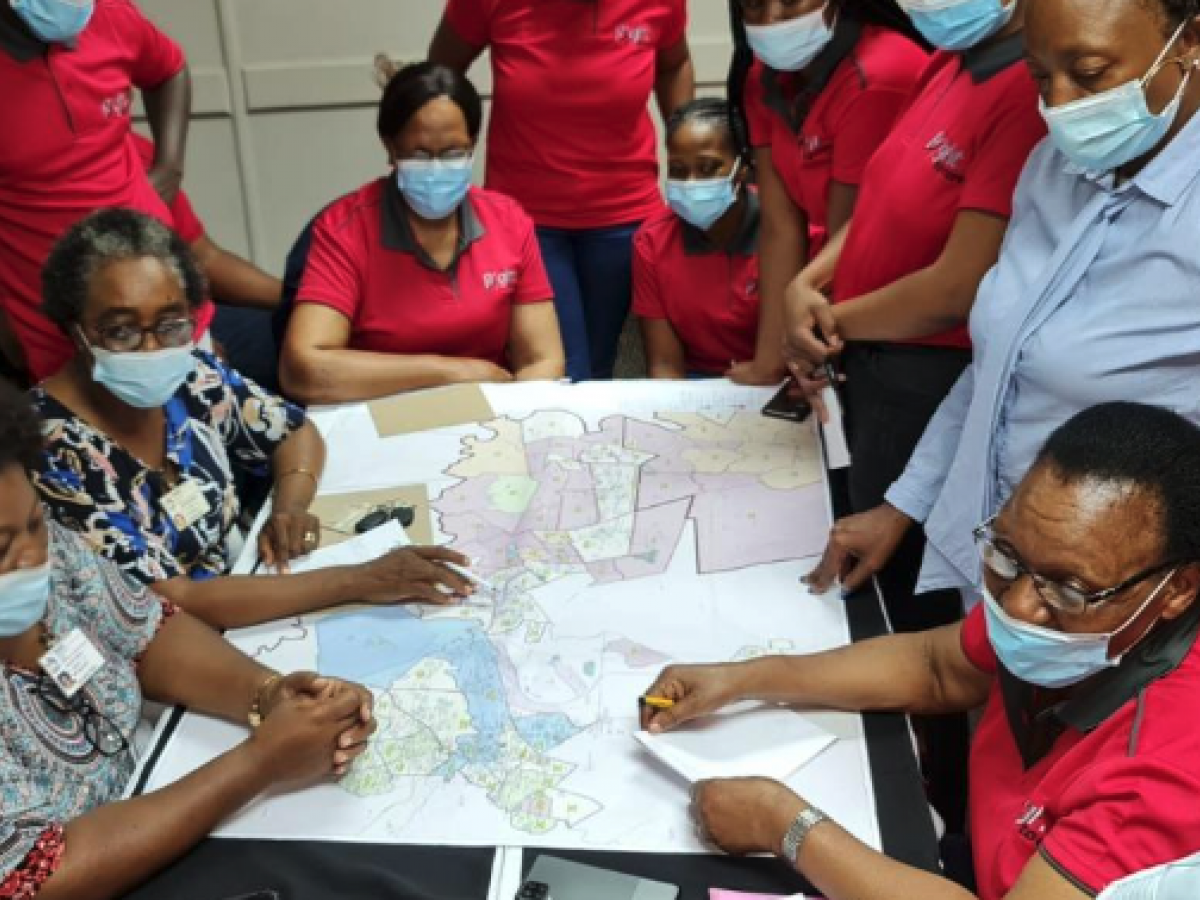Right to Care (RTC) was established in 2000 to secure antiretroviral therapy and related medicines at low cost and to enable treatment programmes for HIV and AIDS patients in South Africa’s public health facilities. The first grant awarded to RTC by USAID was in 2003.
HIV had a devastating impact where it became the leading cause of morbidity and mortality in the communities in which we worked until recently where it has now turned the corner and is becoming a manageable chronic condition with the adoption and implementation, among others, of the U=U approach. There are now more accessible services that are client-centric, tailored to reach more populations including key and vulnerable populations.

Staff of Right to Care pose in front of a poster with the organization's logo
RTC was among the first PEPFAR partners in South Africa to reach UNAIDS 90-90-90 targets in its supported districts. In fact, 100% of RTC districts in South Africa have reached these targets and now, the focus is on reaching the 95-95-95 targets.
RTC’s role has progressed from an HIV/TB care and treatment organization to one that has brought in massive innovative healthcare solutions. These include disruptive innovations that enhance differentiated models of pharmaceutical care in Africa by providing automated easy-to-use, safe, and managed chronic medication dispensing services including smart lockers and in-pharmacy automation;
RTC became the first African global HIV organization that was funded through the USAID EQUIP mechanism to reach 18 countries located in Africa, the Caribbean, South East Asia and Eastern Europe; delivered rapid scale-up of innovative HIV treatment and prevention solutions across PEPFAR countries; RTC has developed fully localized NGO entities in Zambia, Malawi, Lesotho (HIV/AIDS and COVID-19 response), we recently established offices in Namibia;
RTC’s support to SAG’s COVID-19 response through ministerial advice, strategic planning, surveillance, electronic vaccination data system (EVDS) and rural, hard-to-reach areas with vaccination services.

Right to Care staff use GIS driven analytics and HIV datasets to model and predict epidemic control levels
The ethos of our organization is “care.” We proactively build an organizational culture that is conducive for our employees to thrive, innovate, and offer quality care to the communities we serve.
One of the most fulfilling stories is a patient who grows and sells maize and clothing. She attended Mansa Central Hospital, where Right to Care Zambia was supporting the government’s HIV response through funding from USAID. She started antiretroviral treatment, and her viral load, as well as her husband’s, became suppressed. When this patient fell pregnant, she feared that her baby would be HIV-positive. The baby was born negative thanks to PMTCT. This hospital serves over 2,900 HIV positive patients – 94% of these patients are on treatment, and 97% are now virally suppressed.
Right to Care, South Africa
Years as a USAID/PEPFAR partner: 20
